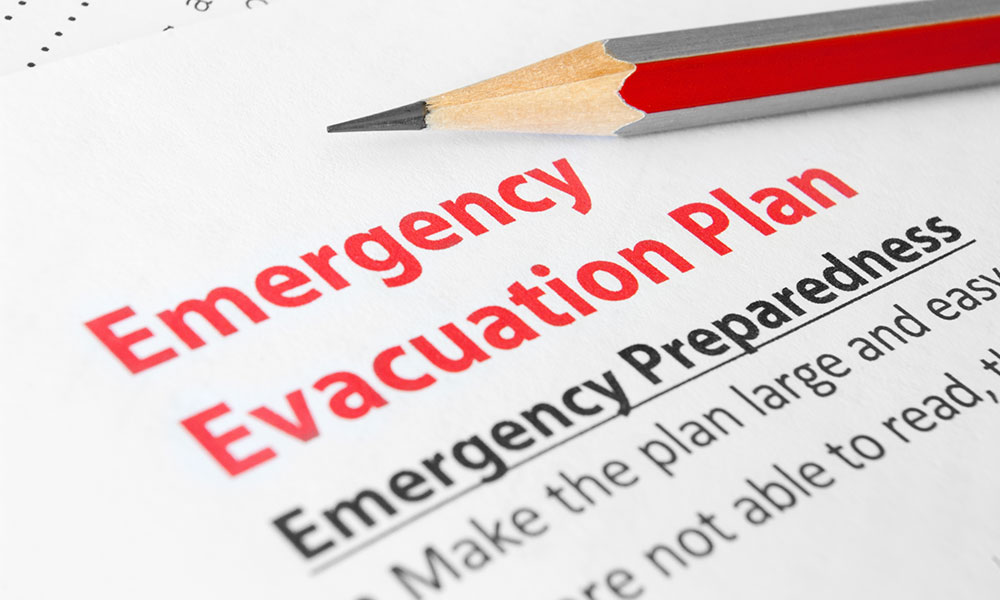
Evacuation Procedures: How Can Your Association Prepare?
Wildfires in Tennessee led to the evacuation of more than 14,000 residents and tourists in the affected areas. How can association meeting planners best prepare for a situation that would require attendees to be evacuated?
Wildfires that started last week in Tennessee’s Great Smoky Mountains National Park have burned 17,000 acres, killed at least 11 people, injured more than 70, and destroyed 700-plus structures. Among those buildings damaged or lost were hotels and resorts.
Before the meeting, I think it’s about establishing communication, knowing who your contact points are, and understanding in a broad sense what’s going to happen if evacuation is required
In addition, the 14 fires, which most affected popular tourist destinations like Gatlinburg and Pigeon Forge, required the evacuation of 14,000 residents and visitors.
Although I’m unsure if any of those visitors evacuated were meeting attendees, events like these, as tragic and destructive as they are, serve as reminder that association meeting planners need to be prepared in case the unexpected unfolds at one of their conferences.
And, while we’ve done a fair amount on AssociationsNow.com about how associations have responded when faced with crises in all forms—from extreme weather, to civil unrest, to terrorist attacks—most of those discussed it from the decision-making angle. In other words, should a conference still go on as planned despite rioting or a predicted hurricane or blizzard in the location?
But, how can planners prepare for a situation where attendees are onsite, the event is already underway, and then something happens—like a wildfire—that requires evacuation?
Bob Mellinger, founder and president of business-continuity firm Attainium Corp., says that this type of preparation and discussion must begin ahead of the meeting.
“The first thing is that you want to make sure you have a good communication path between you and someone at the venue—in other words, a point person or incident commander,” he says. “Because if there’s an evacuation, you need to know you’re going to get good direction, timely direction from this particular person who is more likely to be in contact with first responders than you as a meeting planner would be.”
Mellinger says you need to be comfortable with this person—and have confidence in him or her. No meeting planner should ever feel that they don’t have enough information going into a conference. “If you’re not comfortable with your venue, then don’t hold your event there,” he says.
Once you have that communication line in place and know who is going to contact whom in the case of an event, Mellinger says you also want to have a backup contact—as well as provide the venue with a backup from your organization.
In addition, while Mellinger says that knowing a venue’s evacuation plan is helpful, he says he’s “not entirely sure it’s necessary.”
Why? “Because you don’t want confusion or to get bogged down in details,” he says. Instead, what is probably more useful is knowing some basic details like rally points—places people go if an evacuation is required.
“Before the meeting, I think it’s about establishing communication, knowing who your contact points are, and understanding in a broad sense what’s going to happen if evacuation is required,” Mellinger says.
He adds that if you want to share information with attendees about evacuation procedures pre-meeting, you should tell them to follow the direction of the venue and local first responders.
Evacuation Is Required. What Now?
But what happens if your association is in the middle of a meeting and evacuation is required for any reason?
“As a meeting planner, you need to support the efforts of the venue,” Mellinger says. “If they’re telling people to go out the north side, make sure everyone knows that.”
Mellinger says the more important role for the meeting planner and the association is to handle your attendees who are asking what is going on and wanting to know details. “There is going to be comfort that’s required,” he says. “There’s going to be a need to keep people calm, because they’re going to know the association staff better than the venue people.”
After the evacuation, as things take shape, planners are going to have to deal with situations that are unplanned for, like attendees’ personal items still being in meeting and hotel rooms or their wanting to call their loved ones.
“It’s less about the tactics of the evacuation at this point and more about handling the emotional impact of the event or evacuation on the attendees,” he says. “They’ll be looking to you for that comfort.”
In the end, Mellinger says it all boils down to this: “Let the people who know what to do, do what they’re supposed to do. Know your place and expertise as an association, and know your venue’s as well. That will keep everyone on the same page—and your attendees as safe as possible in any situation.”
How does your association consider evacuation procedures as part of the meeting-planning process? Please share in the comments.
(iStock/Thinkstock)






Comments